Easy French Toast Recipe: Perfect Weekend Breakfast
ADVERTISEMENT
A delectable french toast dish set against a cozy kitchen backdrop. In the foreground, perfectly golden-brown slices of artisanal bread, dusted with powdered sugar and drizzled with warm maple syrup. Accompanying the toast are fresh berries, a pat of creamy butter, and a sprig of mint for garnish. The middle ground features a rustic wooden table, with a vintage coffee mug and a vase of wildflowers adding a touch of charm. The background is bathed in soft, natural light filtering through an open window, casting a warm glow over the scene. The overall atmosphere evokes a tranquil, Sunday morning feel, perfect for savoring this easy, yet indulgent weekend breakfast.
Every weekend morning is a chance for comfort. Nothing says "good morning" like golden, crispy French toast. It's more than just food—it's joy in your kitchen.
ADVERTISEMENT
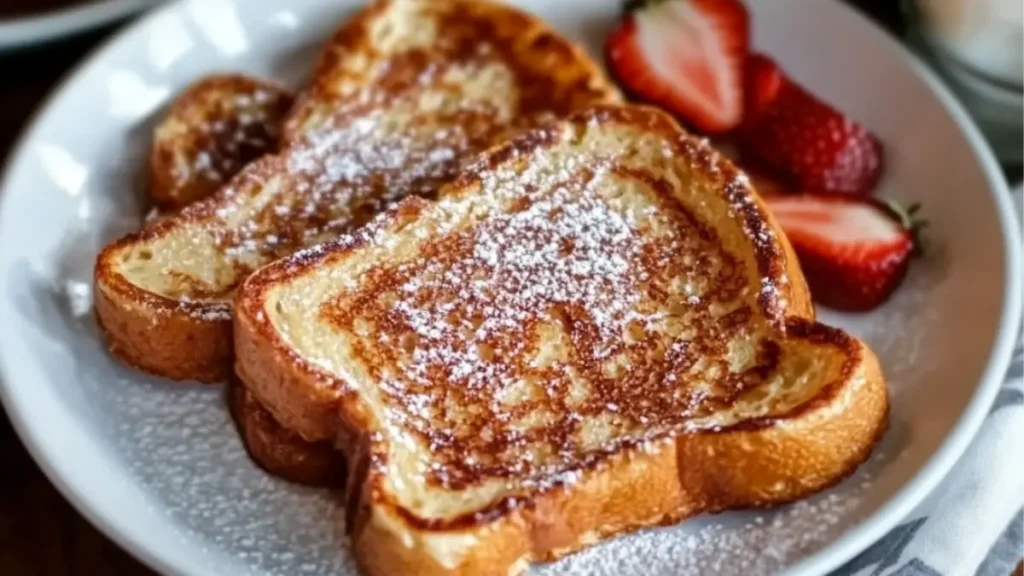
French toast makes any morning special. It's perfect for a lazy Sunday brunch or a surprise for your family. This recipe will be your new weekend favorite.
Imagine bread soaked in eggs, milk, and spices, then cooked to perfection. It's crispy outside and soft inside. Our recipe uses 3 eggs per cup of milk for a luxurious feel.
With only 5 minutes of prep and a few ingredients, you'll make a brunch that looks like it's from a fancy restaurant. Get ready to make your weekend breakfasts amazing!
Why This Classic French Toast Recipe Is Perfect for Weekends
French toast is a favorite for weekend breakfasts. It turns simple ingredients into a tasty treat. It's not just a meal; it's a way to celebrate flavors and traditions that bring families together.
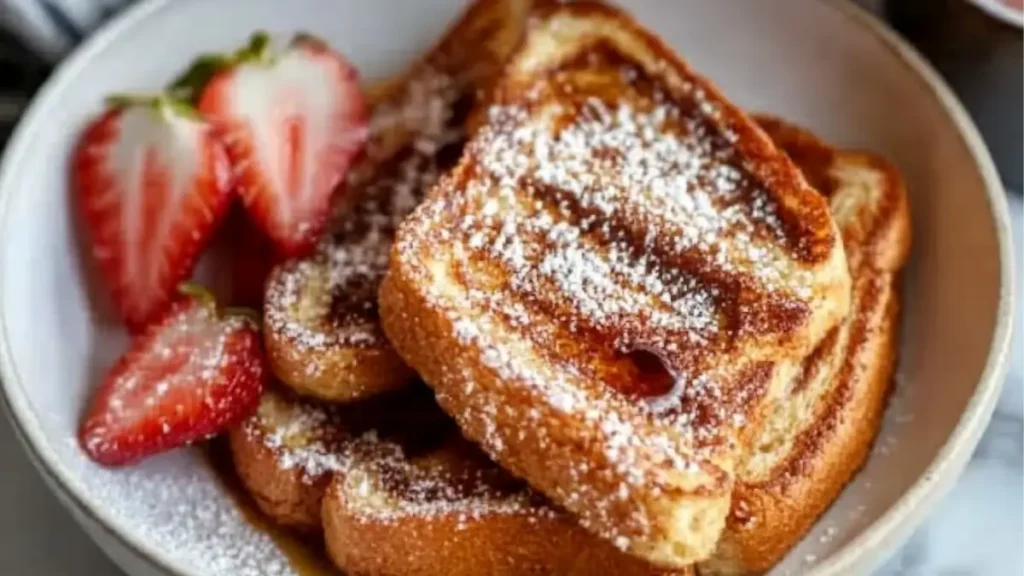
A delightful scene of a weekend brunch featuring a stack of fluffy French toast. In the foreground, golden-brown slices are drizzled with maple syrup and dusted with powdered sugar, creating a mouthwatering display. Surrounding the toast are fresh seasonal berries, a small pitcher of cream, and a sprig of mint for a vibrant pop of color. The middle ground showcases a cozy, sun-dappled kitchen setting, with a rustic wooden table and chairs, and a window overlooking a lush, verdant garden. The warm, soft lighting and the overall composition convey a sense of leisurely comfort and indulgence, perfectly capturing the essence of a relaxing weekend brunch.
History of French Toast
Known as pain perdu or "lost bread" in French, this recipe started as a way to use up old bread. Cooks soaked day-old bread in an egg mixture, making it into a tasty breakfast.
- Originated in medieval Europe
- Created as a method to prevent food waste
- Evolved into a global breakfast favorite
Benefits of Making French Toast at Home
Making brunch recipes at home lets you pick your flavors and ingredients. Homemade French toast has many benefits:
- It's cheaper than eating out
- You can choose what goes into it
- You can try new and exciting flavors
Weekend Brunch Tradition
"Breakfast is everything. The beginning, the first thing. It is the mouthful that is the commitment to a new day, a continuing life." - A. A. Gill
Weekend brunch is more than just a meal; it's a special tradition. French toast is the star, making lazy weekend mornings special. It creates memories with the people you love.
Essential Ingredients for the Perfect French Toast Recipe
A wooden kitchen table with a white linen tablecloth, illuminated by natural light streaming through a nearby window. In the foreground, a stack of golden-brown slices of fresh French bread, accompanied by a small glass bowl of beaten eggs, a dusting of ground cinnamon, and a drizzle of amber maple syrup. In the middle ground, a jug of cold milk and a cluster of ripe red strawberries. In the background, a bowl of powdered sugar and a vintage-inspired ceramic pitcher. The scene exudes the comforting aroma of a weekend breakfast, inviting the viewer to imagine the perfect French toast about to be prepared.
Starting with the right ingredients is key to making great French toast. Your journey to bread pudding begins with a mix of pantry staples. These ingredients turn simple bread into a culinary delight.
Now, let's look at the main ingredients that make custard bread stand out:
- Eggs: The base of your recipe - 4 large eggs add richness and hold everything together
- Whole milk: 1 cup makes it creamy
- Sugar: 1 tablespoon adds a touch of sweetness
- Vanilla extract: 2 teaspoons bring out the flavor
- Ground cinnamon: ½ teaspoon adds warmth
Your choice of bread is crucial. Soft, slightly stale bread is best for soaking up the egg mixture. Here are some good bread options:
- Brioche
- Challah
- Sourdough
- White bread
- French bread
"The secret to perfect French toast lies in the quality of your ingredients and the love you put into preparing them."
Pro tip: Choose bread slices about ¾ inch thick. This ensures they soak up the egg mixture well. Your breakfast guests will appreciate the extra care!
Choosing the Best Bread for French Toast
Choosing the right bread can make your French toast amazing. The bread you pick is key to getting that perfect crispy outside and soft inside.
Not all breads are the same for French toast. Your choice can turn a good breakfast into a great one.
Fresh vs. Stale Bread Options
Surprisingly, stale bread is better for French toast. Day-old bread soaks up the egg mixture better, making it richer. Here's why:
- Slightly dried bread prevents soggy results
- Stale bread keeps its shape while cooking
- It absorbs custard mixtures better
Popular Bread Types for French Toast
Each bread type adds something special to your breakfast:
- Brioche: Rich, buttery, and tender
- Challah: Eggy and sturdy with a beautiful braided texture
- Sourdough: Adds tangy complexity
- French Bread: Crisp outside, soft inside
Bread Preparation Tips
"The secret to great French toast is in the bread preparation." - Chef's Wisdom
To get your bread ready for French toast, cut thick slices (about ¾ to 1 inch). If your bread is too fresh, let it sit for a few hours. This helps prevent it from getting soggy and ensures it absorbs the egg mixture well.
Remember, using quality ingredients is crucial. Pick a bread that's fresh, dense, and can handle a rich custard bath.
The Perfect French Toast Batter Ratio
Creating the perfect french toast recipe starts with mastering the perfect batter ratio. Your custard bread foundation depends on getting the right balance between eggs and milk. Professional chefs recommend a specific proportion that ensures a creamy interior and crispy exterior.
The magic formula for your egg dishes involves precise measurements:
- 4 large eggs
- ⅔ cup milk
- ¼ cup all-purpose flour
- ¼ cup granulated sugar
- 1 teaspoon ground cinnamon
- 1 teaspoon vanilla extract
Your batter's consistency is crucial. Too much liquid makes soggy toast, while too little creates dry, tough bread. The ideal ratio is typically 2 eggs per ¾ cup of milk, which provides the perfect custard-like texture.
"A great french toast recipe is about balance and technique" - Chef's Secret
Pro tip: Whisk ingredients thoroughly to eliminate lumps and create a smooth mixture. Let the bread soak for 20-30 seconds on each side to absorb the maximum flavor. Remember, fresh eggs and whole milk will elevate your french toast from good to extraordinary.
Step-by-Step French Toast Recipe
Making perfect French toast is simpler than you think. Just a few techniques and the right ingredients can turn regular bread into a tasty weekend breakfast. It's sure to wow your family and friends.
Preparing the Batter
Begin by mixing the main ingredients. You'll need:
- 4 large eggs
- ⅔ cup whole milk
- 2 teaspoons ground cinnamon
- 1 teaspoon vanilla extract
- Pinch of salt
In a wide, shallow bowl, whisk these ingredients together. Make sure they're smooth and well-blended. The whole milk adds a rich, custard-like texture that makes French toast so tasty.
Soaking the Bread
Choose 8 thick slices of slightly stale bread. Two-day-old bread is perfect for soaking up flavors. Dip each slice in the egg mixture for 20-30 seconds on each side. It should be well-coated but not too wet.
"The secret to great French toast is in the soaking – you want every slice to be perfectly saturated with flavor."
Cooking Techniques
Preheat your griddle to medium heat. Lightly butter it to prevent sticking and add flavor. Cook each slice for 3-4 minutes on each side, until golden. Keep the cooked slices warm in a 170°F oven while cooking the rest.
Your homemade French toast is now ready. Serve it with maple syrup, fresh berries, or powdered sugar. Enjoy your delicious breakfast!
Secret Tips for Crispy Exterior and Custardy Interior
Making the perfect french toast is all about balance. You want a crispy outside and a soft inside. With these tips, your breakfast will be amazing.
Here are a few tricks to get that perfect texture:
- Sprinkle sugar on the bread's surface before cooking to create a caramelized crust
- Use a combination of butter and oil to prevent burning while adding rich flavor
- Cook over medium heat for 3-4 minutes per side
Keeping the right temperature is key. Use a consistent medium heat to get a golden-brown outside without burning. Aim for a temperature of 350°F for the best crispy texture.
"The art of French toast is in the details of preparation and cooking technique." - Culinary Expert
When making your custard bread mixture, use 2 eggs to ¼ cup of milk. Soak each slice for about 30 seconds on each side. This ensures the bread absorbs the mixture well without getting soggy.
- Recommended soaking time: 20-30 seconds
- Ideal cooking temperature: 350°F
- Cooking time per side: 3-4 minutes
Pro tip: Keep cooked slices warm in a 275°F oven while finishing the batch. This keeps every piece crisp and delicious.
Creative Toppings and Serving Suggestions
Make your French toast special with these tasty toppings. They'll turn your breakfast into a memorable treat. Whether you love classic flavors or new ones, these ideas will make your morning better.
Classic Toppings that Never Disappoint
Maple syrup topping adds warmth and sweetness to your French toast. Drizzle it on for a traditional taste. Try cinnamon sugar topping for a sweet twist.
- Maple syrup topping
- Powdered sugar
- Fresh berries
- Whipped cream
Seasonal Flavor Adventures
Try new flavors with the seasons. Here are some fun ideas:
- Tropical coconut French toast with roasted pineapple
- Spiced banana honey French toast
- Ricotta and strawberry delight
- Chocolate and banana fusion
Garnishing Like a Pro
How you present your French toast matters. Add garnishes that look good and taste great. Try chopped nuts, yogurt, or chocolate drizzles.
"Breakfast is always a good idea, especialy when it looks as delicious as perfectly topped French toast!" - Culinary Expert
Remember, the best French toast comes from trying new toppings. Find your favorite mix.
Make-Ahead and Storage Options
Make your breakfast better with smart make-ahead tips for French toast. Preparing your brunch recipes early saves time and reduces stress. It's great for weekend family meals or quick weekday breakfasts.
Freezing French toast is a big help for busy cooks. You can freeze it for up to 3 months. Here are some key storage tips:
- Cool the French toast completely before freezing
- Wrap individual pieces in parchment paper
- Store in a freezer-safe container or zip-lock bag
- Label with the date of preparation
Reheating is easy with several options. Use a toaster, oven, or air fryer to warm it up. For best results, thaw it in the fridge overnight before reheating.
Pro tip: Reheat at 350°F for 10-15 minutes to maintain that crispy exterior and soft, custardy interior.
For a French toast casserole, assemble it up to 24 hours in advance. Just cover and refrigerate, then bake when you're ready. This method is perfect for stress-free entertaining and tasty breakfasts.
Conclusion
Your journey through the world of French toast doesn't end here. This classic breakfast dish is more than just a recipe. It's a chance to make memorable weekend brunches for your family and friends. By mastering the techniques shared in this guide, you'll turn an ordinary morning into a special culinary experience.
Remember, the secret to an amazing French toast recipe is using quality ingredients and focusing on details. Choosing the right bread and perfecting your soaking technique are key. Each step helps make a dish that's crispy outside and custardy inside.
Don't be afraid to try different bread types, toppings, and flavors. Whether it's a quick weekend brunch or a special breakfast gathering, your skills will make it delicious. Making French toast is about being creative, practicing, and enjoying the journey.
With these tips and techniques, you're ready to become a French toast master. Start your culinary adventure and watch your weekend breakfasts become extraordinary!
FAQ
What type of bread works best for French toast?
Challah, brioche, and French bread are top choices. Slightly stale bread is best because it soaks up the egg mixture well. If your bread is fresh, dry it out for a few hours or lightly toast it.
How long should I soak the bread in the egg mixture?
Soak each slice for 20-30 seconds on each side. This ensures the bread is coated but not too wet. It should absorb the custard without getting soggy.
Can I make French toast ahead of time?
Yes, you can make French toast ahead and freeze it for up to 1 month. Cool it completely, then layer it in an airtight container. Reheat in a toaster, oven, or air fryer for the best taste.
What are some creative topping ideas for French toast?
Try these toppings: - Fresh berries and whipped cream - Nutella and sliced bananas - Caramelized apples - Lemon curd and powdered sugar - Cream cheese and fruit compote
How can I make my French toast extra crispy?
For a crispy exterior, follow these tips: - Use butter and oil in the pan - Sprinkle sugar on the bread before cooking - Cook at medium-high heat - Don't overcrowd the pan - Pat the bread dry before dipping
Is French toast suitable for special diets?
Yes, you can make French toast for different diets: - Gluten-free: Use gluten-free bread - Dairy-free: Use almond or oat milk - Vegan: Use plant-based milk and flax eggs - Low-sugar: Use sugar alternatives or reduce sugar
What's the ideal egg-to-milk ratio for French toast?
Use ¼ cup of milk for every 2 eggs. This gives a good custard texture without being too wet. Adjust based on bread type and preference.
How do I prevent my French toast from becoming soggy?
To avoid soggy French toast: - Use slightly stale bread - Don't oversoak the bread - Use a non-stick pan or well-seasoned griddle - Cook at the right temperature (medium-high heat) - Don't add too much milk to your egg mixture - Pat the bread dry before dipping
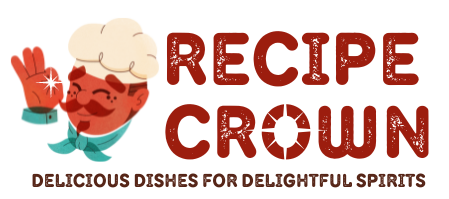
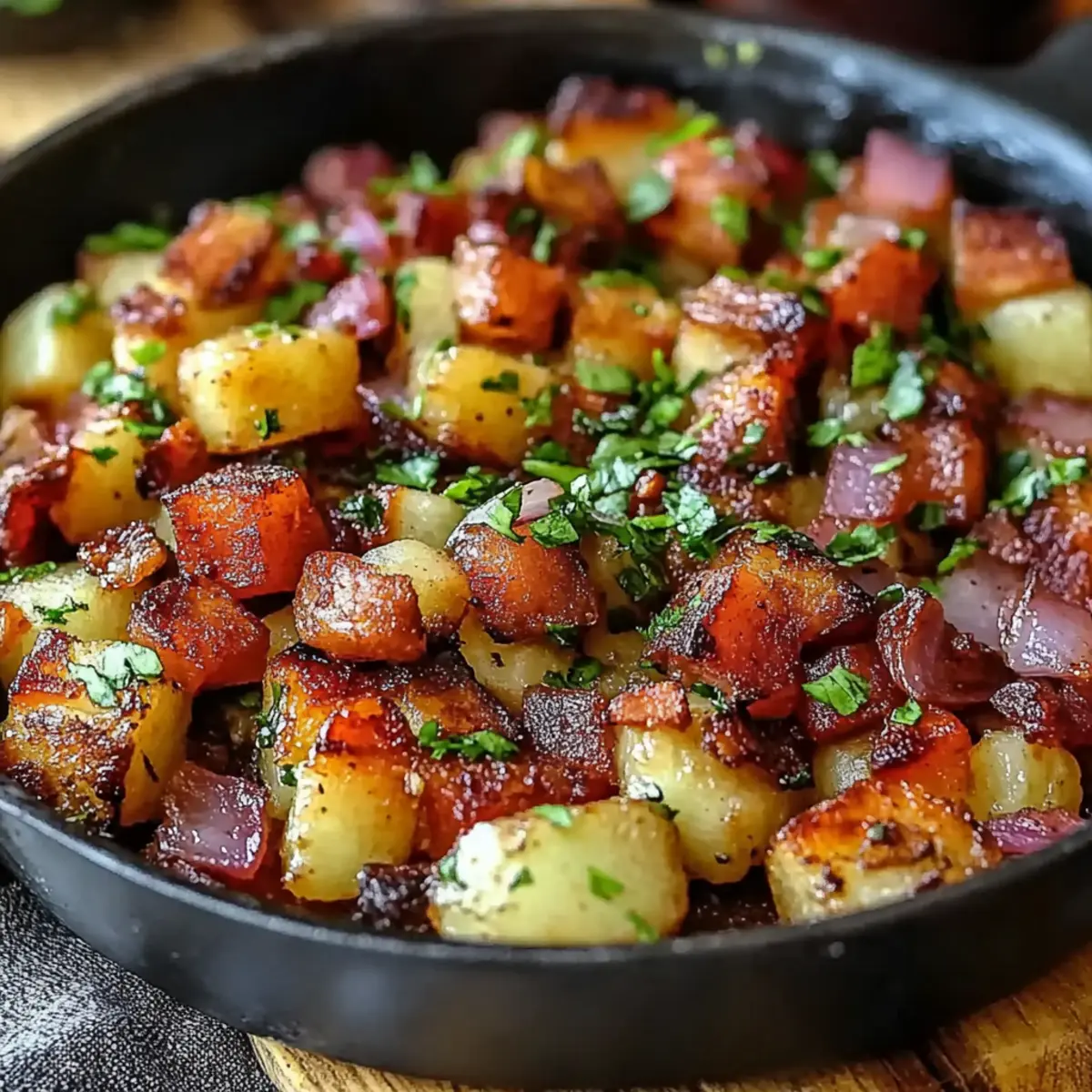
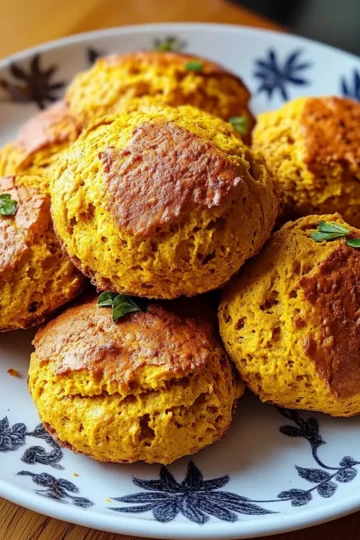


Leave a Reply